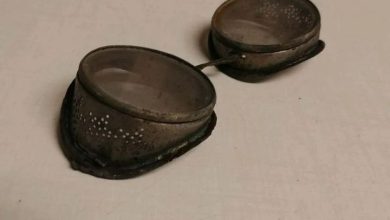Rediscovering the Past: The Enigma of Vintage Laundry Tools

ADVERTISEMENT
Rediscovering the Past: The Enigma of Vintage Laundry Tools
In our quest to understand and appreciate the past, vintage household items offer a fascinating glimpse into the daily lives and routines of previous generations. One such intriguing object is the antique laundry tool depicted in the image. This article explores the history, design, and functionality of vintage laundry tools, particularly the item shown, and reflects on the evolution of domestic chores.
The Evolution of Laundry Tools
ADVERTISEMENT
Before the advent of modern washing machines and dryers, laundry was a labor-intensive task requiring various manual tools to facilitate the process. These tools were designed to handle the rigors of washing, wringing, and drying clothes without the convenience of electricity.
Identifying the Vintage Laundry Tool
The image shows a piece of equipment that resembles a vintage hand-crank wringer. These devices were commonly used in the late 19th and early 20th centuries to wring excess water out of clothing after washing. Here are some distinctive features:
1. **Hand-Crank Mechanism:** The presence of cranks and gears indicates that the tool was operated manually. Users would feed wet clothes through the rollers while turning the crank to squeeze out water.
2. **Rollers:** The cylindrical rollers were essential components that applied pressure to the fabric, expelling water efficiently.
ADVERTISEMENT
3. **Sturdy Construction:** Made of metal and sometimes wood, these tools were built to withstand frequent use. The robust design ensured durability.
4. **Foldable or Adjustable Parts:** Some models featured adjustable or foldable legs, making them easier to store when not in use.
The Functionality of Hand-Crank Wringers
Using a hand-crank wringer involved several steps:
– **Loading Clothes:** After washing clothes in a basin or tub, the wet garments were fed into the wringer’s rollers.
– **Cranking:** Turning the crank engaged the gears, causing the rollers to rotate and compress the fabric.
– **Collecting Water:** As water was squeezed out, it would typically be collected in a basin placed below the wringer.
– **Drying:** Once wrung, the clothes were significantly less wet and easier to dry, either by hanging outdoors or indoors.
#### The Importance of Vintage Laundry Tools
ADVERTISEMENT
1. **Efficiency:** Despite the manual effort required, hand-crank wringers made the laundry process more efficient by reducing drying time.
2. **Durability:** Built to last, many of these tools have survived through the years and are still functional, reflecting the quality of craftsmanship.
3. **Historical Value:** Vintage laundry tools are not just functional items but also historical artifacts that tell the story of domestic life in the past.
4. **Eco-Friendly:** In today’s context, using manual laundry tools can be an environmentally friendly alternative, reducing energy consumption and reliance on modern appliances.
Conclusion
The vintage laundry tool in the image serves as a reminder of the ingenuity and resilience of previous generations in managing household chores. By understanding and appreciating these tools, we can gain insights into the evolution of domestic technology and the daily lives of our ancestors. Collectors and enthusiasts of vintage items often cherish these tools for their historical value and unique charm, keeping the legacy of the past alive for future generations.
ADVERTISEMENT




